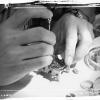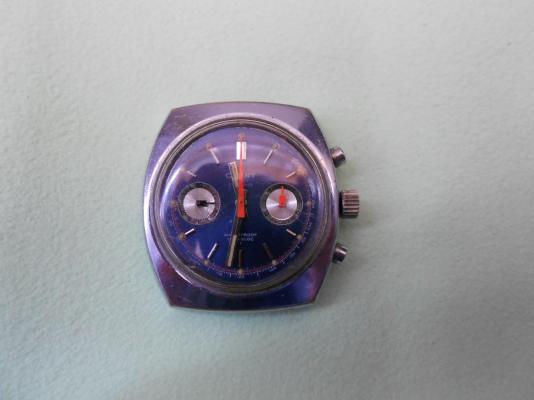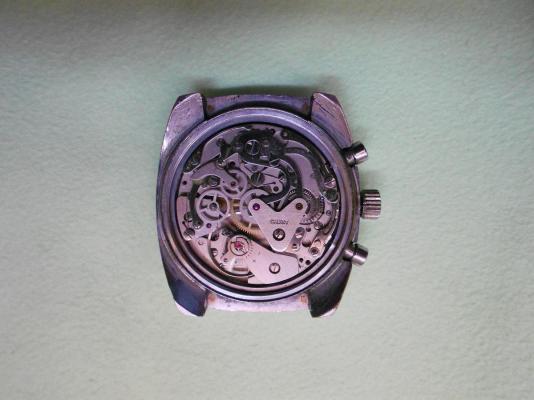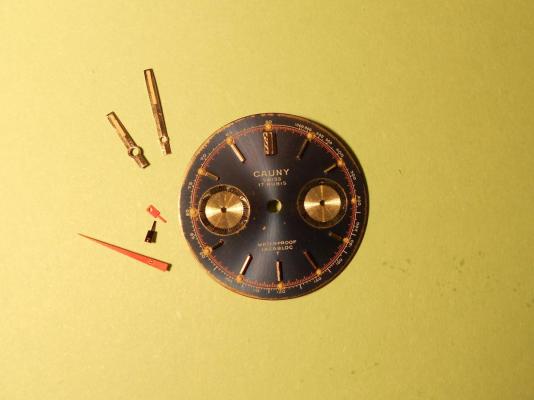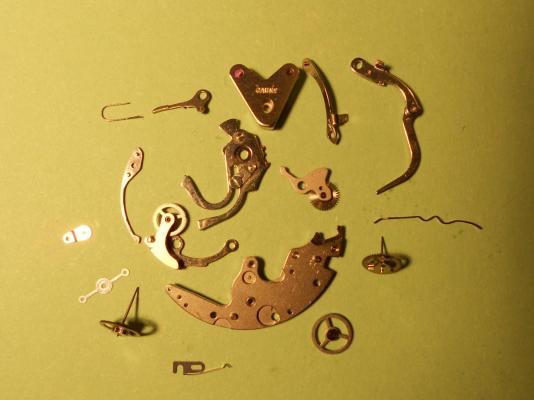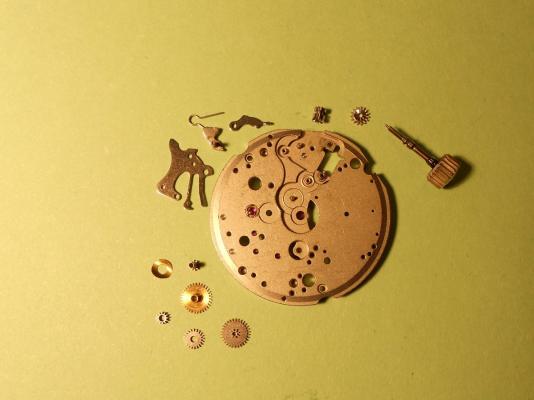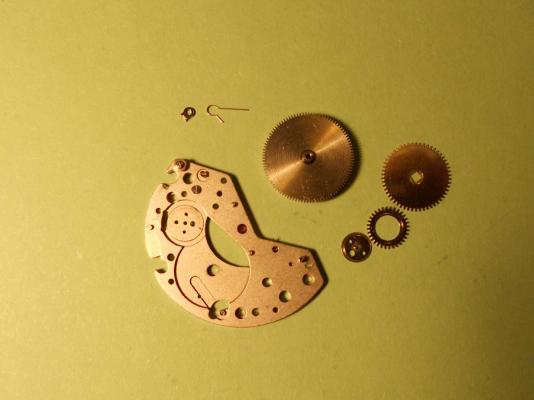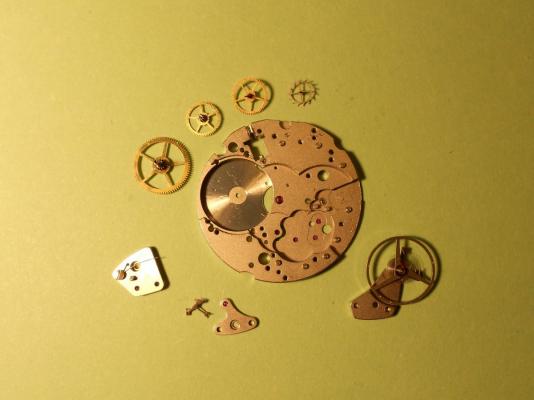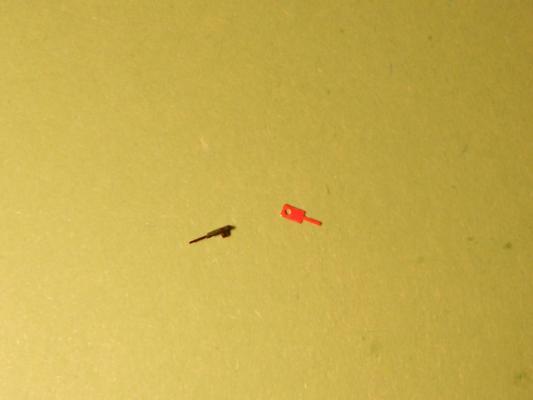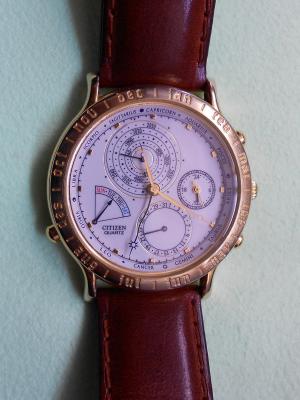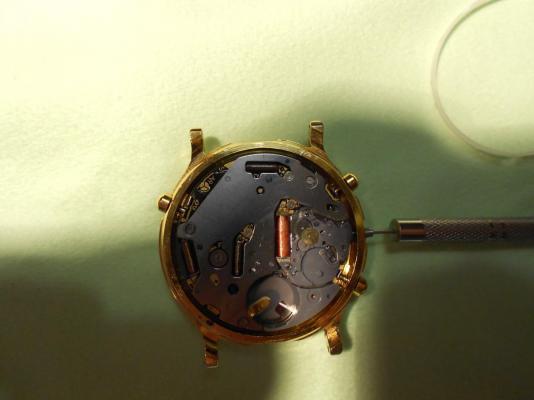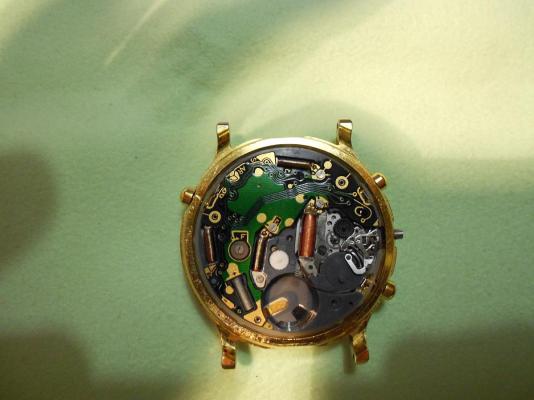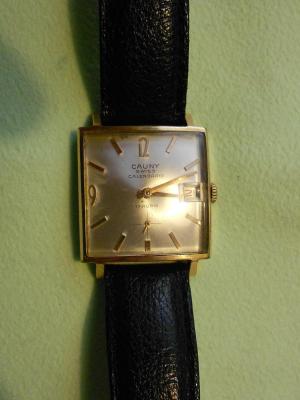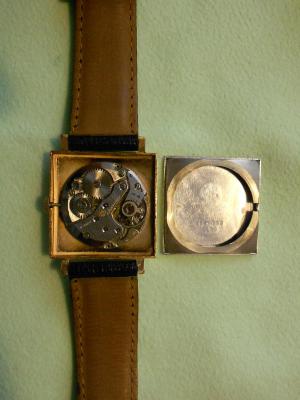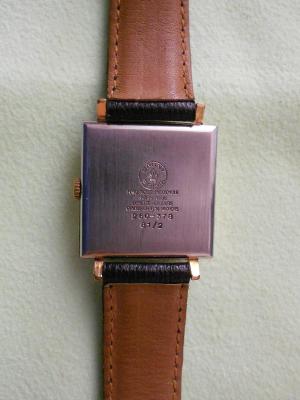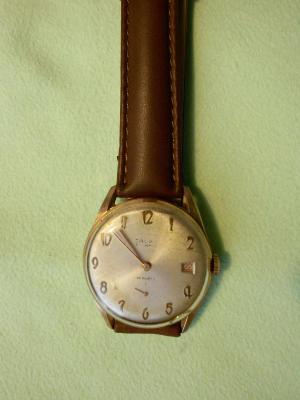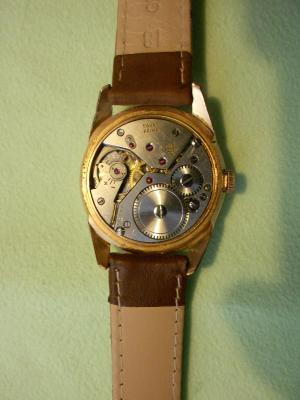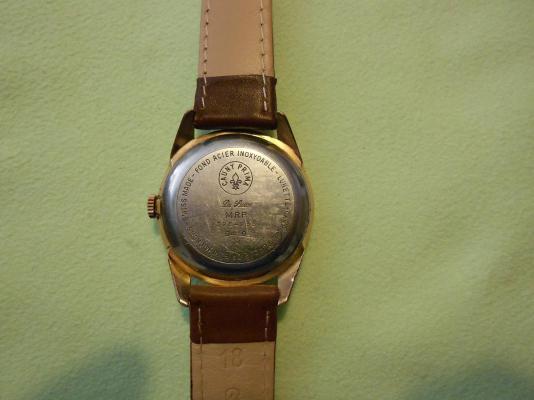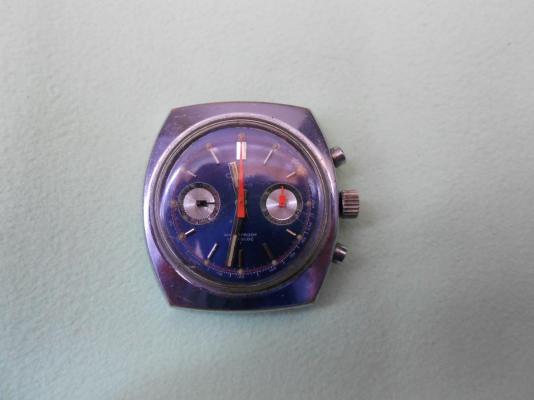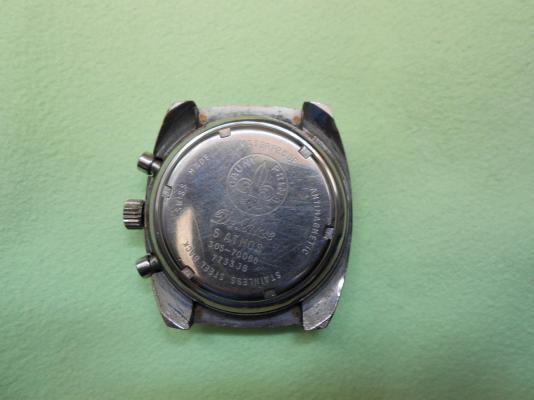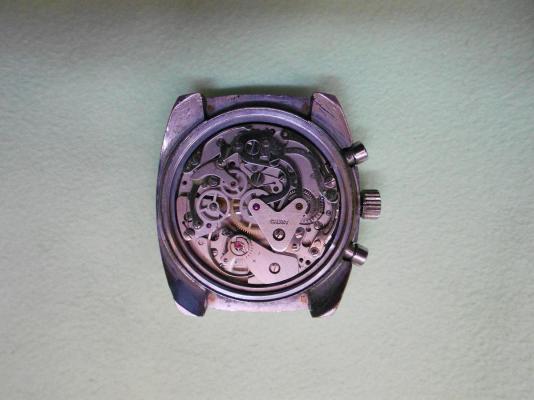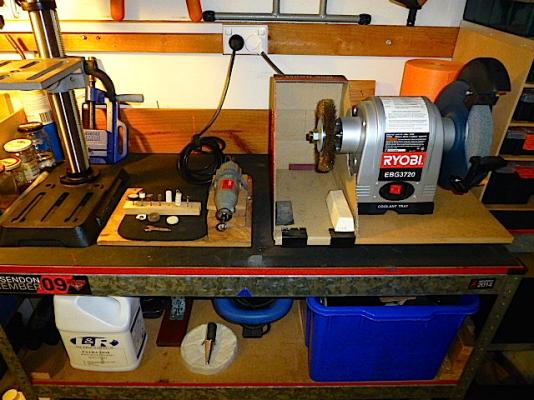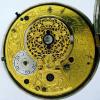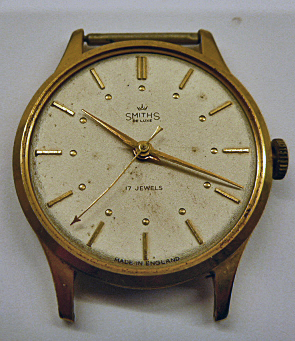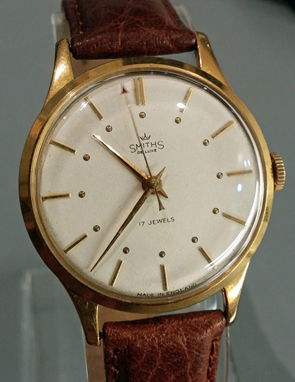Leaderboard
Popular Content
Showing content with the highest reputation on 07/25/15 in all areas
-
As I told in my introdoctury post, I had decided to give a (big) step further in my short watchmaking hobby experience, servicing a Cauny Chronograph that I own since 1969 and that rested (but not forgotten) in my watches box: First came out hands and dial...: then the chronograph module...: the keyless and motion work...: barrel bridge...: basic module...: So everything ready for a good cleaning! I only had a (little/big?) problem on disassembling: when pullling the chronograph minute recorder hand, it came off without the (so!) little "cylinder pipe" that goes on the wheel chronograph pivot, to which it rested firmly attached! It only came off when I take off (from the other side of the plate), and with some effort, the minute recorder wheel. Unfotunately when I was trying to see if it was possible to attach it again to the hand, it decided to "fly away", and I could not find it yet, and I suppose never will. So probably when I'' finish to assemble the watch I'll have one hand that doesn't "hook" in its pivot. Your suggestions wll be most welcome!! Thanks! in this photo you can see the "injured" hand together with its "healthy" subsidiary seconds "cousin":2 points
-
Well here she is, back from the dead ( land of rust ). Always nice to have a watch return to form, especially one so damaged. Im a total addict and this is my fix :)2 points
-
Although I am 61 years old I am a newbie in the watchmaker hobby. And in first place I want to give a big thank to Mark Lovick, as there were his fantastic video tutorials, ( I think I have seen them all these last months ), that give me sufficient knowledge and confidence to begin it all. I was always interested by watches since I was 11 and my father gave me my first watch, a Cauny Prima. Through the years I bought some more watches, as those I was wearing were getting old, or a few little times for the pleasure of having a nice new one that I had seen on a watchmaker show window. Of course, that however the watches I appreciated more were the mechanicals, I finished buying some few quartz ones. And the quartz watch that I really was fascinated by in 1992, was a Citizen 6700 Perpetual Calendar. Perpetual Calendars have always fascinated me, but having no financial possibilities of buying a mechanical one, that was the closest I could get. I wore that beautiful watch regularly until 1999 when I finally could by the mechanical watch I always desired, an Omega Speedmaster (although the reduced one!). The Citizen was worn from times to times and one day the perpetual calendar was not working any more. I put it in my watches box, where I keep all the watches I had since the first one, and there it rested for several years. Seven or eight years ago I decided to bring it to the store where I bought it, and ask for a repair. Two weeks later they told me it was not possible to repair it because the lack of spares. And I put it again in the box, a little sad, because I really liked that watch. Well, some more years went by ( measured mostly by the Omega ), and last year I became suddenly a “forced” retired from my job. With a lot of time to use, I decided to use it in some hobbies. And there was a day when I opened my watches box that I thought, regarding the Citizen, “I will not give up of you, I’ll try to bring you back to life!”. I decided to open it, and I quickly discovered that the stem was broken loose (although I couldn’t remember where that could have happened). I searched the internet and I found in Beco Technik web site the part no. for the stem I needed, and the supplier in Portugal. When the stem arrived my “odyssey” began. First I could not use the new stem immediately because there was the broken piece of the old one inside the movement that refused to come out without (a lot of) disassembling. Once again internet was mandatory, as I could find the Citizen Technical information paper for the 6700 movement. It was a good help for a better understanding of the parts to deal with. And really it was not so easy for a complete rookie at this kind of work. I needed to strip down the keyless work to free the broken part of the old stem, and to get there I had to take off the seconds rotor, (and I was astonished by its microscopic size!), and also the so little plastic and metal gears related. After getting out the old stem and when I began assembling I was surprised by how tricky and “temperamental” the keyless assembly was. I needed to do the all job three times, before I got the new stem perfectly fitted. After that and after installing a new battery came the first disappointment, the watch was not working as the seconds hand didn’t move, although I could manage to move some of the calendar functions. It was obvious that I had to start all over again. And I quickly discovered what had gone wrong: the tiny rotor and first gear upper pivots were bent/broken. Of course the one to blame was tis newbie that was not careful enough when fitting and tightening the bridge over those gears! Well, I had now in my hands a definitely not working watch and I needed new spares, that of course I couldn’t find anywhere. So I decided to search in ebay for a possible donator watch with the same movement. After a few weeks of searching I finally managed to buy a non-working Citizen Noblia from a guy in United States, hoping that the parts I needed were in good shape. After a long several weeks wait due to custom procedures, when I got the watch I was finally able and fortunate to get the spares I needed, and after 2 or 3 more disassembling/assembling operations and some electronic components also changed, I finally got, for my great amusement and happiness, a perfectly working Citizen 6700 Perpetual Calendar, which I show you here: two inside views during disassembling: All the work and time spent were really worthwhile, not only for the watch I appreciated so much, but also because I realised that perhaps in the future I could manage to deal with mechanical watches, those machines that really marvelled me since I was a young boy. So I bought some books and some tools and began searching the web for good maintenance and servicing information. And then I discovered what really mattered, Mark Lovick’s Watch Repair Channel. I spent many hours watching and learning as much as I could, and some weeks ago I opened again my watches box and I was sure to be able of servicing my old first watch, that Cauny that my father gave me in 1964. First surprise: that watch that I didn’t wear since 1969, (and had no servicing since then), began to run as soon as I began winding it up! I think it is really astonishing regarding that 46 years went by, and that the quality of the lubricants used those days have nothing to do with those available today! Well, nevertheless, I thought it really deserved a good cleaning and lubrication job, and so I did, based in the knowledge I got from Mark’s tutorials! And how happy I was when that fascinating moment came, carefully putting in place the balance, and seeing it begin to ”beat” and “giving life” to the escape wheel and other gears! I felt like a pilot flying its first solo! Some months ago I could not imagine that I should one day be able of disassembling a mechanical watch and putting back all together working! Here it is my first watch, working nicely 51 years after my father gave it to me: Enthusiastic after that first successful job, I asked my father if, by chance, he had kept some of his old watches, and to my surprise he gave me a non-working Cauny ( it was a well-known and reliable and affordable brand in the 50’ies and 60’ties ) with a UNITAS 6410 movement. I think he had bought it around 1958/59. And so my second service job began, managing to get it working quite nicely. Here it is : What I didn´t dare for the moment, (as in the other Cauny), was to clean and refurbish a little the dial. For the moment I have no knowledge of the best way to do it. And as I serviced already two Caunys nothing better that go on with a third one. But this one promises surely a lot more of work and proficiency. It’s a chronograph with a VALJOUX 7733 that my father offered me when I was 15. Here it is: I already got in the internet the original VALJOUX Technical and Service Manual. We’ll see if I’m up for this much more difficult job! Curiously I discovered this forum only yesterday, perhaps because I was so "embedded" in the youtube channel, but I already noticed that there is here much more knowledge and help I’ll surely need in the future. My thanks in advance, and I apologize for this long introductory post!1 point
-
Dial work was done by David Bill & Sons, very very good dial finishers and pricing that is fair. I only use restoration where the dial is beyond usable ( as you can see above photos the original was bad ), i can do some dial work but this level i think is exceptional considering condition and prices. The movement was rusted through but now ticks away at +- 7s // 0.5ms, casing re polished by hand but not overly so. Its a bit of a break from what i normally work on but when i saw it i thought.....hmm now there's a challenge. Casing seized shut , rusted broken movement, dial shot , glass cracked, and swimming in fluid, most leave well alone but im a silly sod and like to push my limits. Thanks for the comments :)1 point
-
A little strange isn't it? What this means is that, unfortunately, I'll never be able of reaching the level of knowlege you have!! But I'm sure that, nevertheless my late begining, this hobby will give me many hours of entertainment and pleasure.1 point
-
Just finshed the square watch here the rest of the photos. Outline. and then chipping away the glass photo can be seen aboved. ended up having to start a new one since i over cut one of the corners. Over all this took a good bit of time, about 5 broken crystals but being that this was my first time doing custom crystal i think over all it came out well, happy to put my name on this and return it to the customers. with more pratice i hope to do this much quicker. and maybe someone will have some tips or others tools i'll be able to use to make it quicker. As a side not how much does this type of work normally cost? Currently im charging 45$ CAD retail for this.1 point
-
That's a nice bit of kit, but you would have to be a serious user for it to make sense. £270 is a lot for a machine you may only use infrequently. The options suggested by the other guys makes more sense to me and it wouldn't hog as much space in your man cave. This is my setup for machine polishing, and I rarely use the big one for watches.1 point
-
Hello Gary, Well as both Ranfft and Cousins agreed on everything except the length I would think on the balance of probability that someone has put the wrong spring in the barrel. If you can find another supplier for the mainspring of the AS 984 and see what they come up with that could put your mind at rest. However, whereas the length may not be as critical I think that the 1.4 instead of 1.7 could indeed make a difference. Cheers, Vic1 point
-
Best avoided see here: http://www.reviewcentre.com/Online-Miscellaneous-Shops/WatchPart-www-watchpart-co-uk-reviews_1806630 and here: http://watchguy.co.uk/review-watchpart-co-uk-a-scam/ and many other sites as well.1 point
-
Just a little tip on the simplest and infallible (well almost) way of unscrewing a watch case back. I use a crude suction tool without the suction pad, but any handle will do the job. Attach the strongest double-sided mounting tape that you can find and, as shown, most screw backs can be removed quite easily - far better than any suction device.1 point
-
1 point
-
1 point




